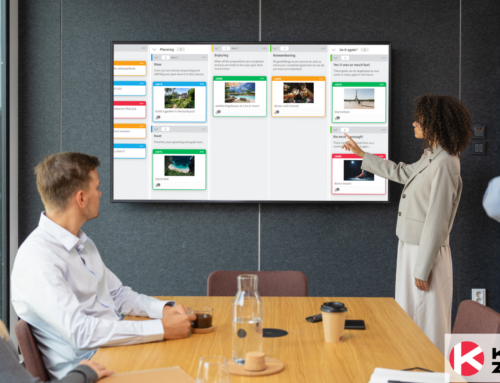
The recent years have made a radical change in the way we do work. As a consequence of the pandemic forcing employees to work at home, employees are rethinking their priorities and how their companies support them. When employees find out that their priorities don’t align with the company’s working conditions and environment, they decide to leave. And in recent years, we’ve seen mass resignations from employees either due to burnout, familial obligations, or opportunities from other companies that align better with their desired working conditions.
Dubbed as “The Great Resignation,” we saw a rise in employees quitting their jobs in late 2020 and up to 2021. As the pandemic is seen to reach an end, companies are evaluating their version of the “new normal.” Many major corporations have already announced that their employees are no longer required to go to the office full-time. Hybrid work arrangements and flexible working conditions are rolled out.
Why is Employee Engagement Important?
The truth is we are never going back to the old workplace setup. Employees have had the taste of working remotely. Companies have seen working remotely is productive. If companies don’t create a working environment that adapts to the changes in employees’ priorities and expectations, they will highly likely experience high turnover rates.
This inevitable workplace shift caused by the pandemic is also forcing companies to think of strategies aimed at improving employee engagement. Fancy pantries, in-office gyms, and daycare are no longer effective “perks” that attract employees. Employees look for flexible working schedules, hybrid work arrangements where they don’t need to go to the office every day, and more individualized work settings.
If management doesn’t rethink their employee engagement strategy, they will have a hard time retaining and attracting top talent.
10 Ideas on Improving Employee Engagement in 2022
Given the change in employee priorities and perspectives about work, organizations should strive to support employees through meaningful employee engagement initiatives. Here are some strategies you can implement to improve employee engagement.
1. Invest in Mental Health Initiatives
Improving employee engagement through health and well-being initiatives is a must. But when we talk about health and well-being we must look at it from a holistic perspective. Companies often provide physical health perks and benefits. Discounted or free gym memberships, healthy meals at the cafeteria, free physical check-ups are some of the common health benefits that employees get. Mental health isn’t always in the mix as much as it should be. This pandemic has taught us that mental health is a key factor in maintaining the overall health and well-being of employees. They deal with anxiety, self-doubt, worries, and depression. These will only make it more difficult for your employees to show up for work let alone be engaged in their job.
Mental health should be a priority for all organizations. Many organizations have a toxic work environment which can be mentally and emotionally draining for the employees. Focusing on building a good and positive work environment would also help in taking care of the employees’ mental health. Offer counseling services from professionals, host seminars that talk about mental health issues and how to overcome them, and provide a safe space for your employees to share about their problems.
2. Have One-on-One Time
Each person has different motivators and will engage at work in the way that suits them. You will most likely need to use different engagement strategies for your employees. But to find the right approach, you must first learn what motivates them. One of the tools that I use with my team is the Five Languages of Appreciation by Gary Chapman and Paul White. The Five Languages of Appreciation are based on the original Five Love Languages by Gary Chapman but put into the context of the workplace.
Every time I have a newcomer in the team, I ask them to answer the Five Languages of Appreciation questionnaire. Each employee will have a dominant language of appreciation, these are:
- Words of Affirmation
- Acts of Service
- Quality Time
- Gifts
- Appropriate Physical Touch
Knowing their language of appreciation helps me communicate with them, reward them, and correct them more effectively. I can then use these to develop one-on-one encounters with my direct reports and develop a more engaging working relationship with them.
3. Recognize and Reward Timely
One of the most effective ways in improving employee engagement is to recognize and reward them. But timing and the method is important. These should be done close to when the desirable act or output from the employee happened. It could be after a project was completed, a sale was closed, a problem was solved by the employee’s efforts, and so on. Effectively optimizing incentive plan strategies can ensure these recognitions and rewards are delivered timely and impactfully. The method of rewarding is also important. Any employee would love that their good performance is made known to others. So when you recognize and reward your employees, announce it to the whole team or better yet the whole organization. This will not only make them feel good about themselves. It will also inspire others to commend them and perform better at work.
You can also implement a peer-to-peer recognition program. Even something as simple as a “Kudos Wall” or having each team member share about how another team member helped them at work will encourage a culture of meritocracy that employees would want to be in.
4. Empower Your Employees to Make Decisions
Another effective way in improving employee engagement is giving autonomy. When employees feel that they are actively contributing to company growth, they will feel empowered and more engaged to do more.
Provide your employees with the support they need to make decisions and drive initiatives to completion. Whether through tools, processes, or showing you trust them to do a job well done – your support will empower them to make good decisions fast. Foster an environment where self-leadership blossoms. As we move towards a more individual and asynchronous work setting, we need everyone to be a leader in their own right.
5. Offer Learning Opportunities and Continuous Education
Another effective way in improving employee engagement is through learning opportunities and training. Access to training and professional development opportunities are attractive benefits that increase employee retention and engagement.
Offer in-office and self-paced online training. Consider implementing interactive data engineering courses to empower your technical teams with essential skills for data management. Mentoring is also a plus. Provide opportunities for both professional and personal growth. This will not only improve employee engagement but the overall job satisfaction of your employees.
6. Respect Work-Life Boundaries
One of the key things in improving employee engagement is showing your employees that you respect their work-life boundaries. Honor core work hours and avoid contacting your employees after working hours. Don’t let your employees work overtime.
In Portugal, there’s a law that prohibits employers from texting employees after working hours. Soon, more countries will pass legislation that is centered on promoting work-life balance and each worker’s right to rest, especially for remote workers. Just because employees are working from home doesn’t mean the concept of working hours has gone out the window.
7. Promote a Transparent Work Environment
Transparency helps in improving employee engagement by preventing conflicts, misunderstandings, and misalignment among employees. Implement effective communication channels that will ensure accessibility to information across the organization.
Provide platforms for your employees to interact and collaborate whether virtually or in person if you are in an office. Share company news on time and with everyone. Have regular town halls where you discuss company-wide updates. Get your employees’ feedback on company matters. Share latest developments and organizational changes.
Apart from the “serious stuff” that goes into organizational communication, spark fun and engaging conversations among your employees. Have channels to share work banter and random information.
Fostering an open and transparent environment will build trust and camaraderie among your employees which will increase employee engagement.
8. Make Your Employees Feel Celebrated
Another way to improve employee engagement is to celebrate your employees’ personal and professional milestones. Birthdays, weddings, work anniversaries, promotions, project completion, deals closed – make an effort to cheer for your employees. Make them feel their wins are as much as yours. This will boost their morale and make them feel they are important to the organization.
How do you celebrate them? You can opt to give gifts or tokens. Hold a monthly event to celebrate these milestones. If you have the budget for it, you can even give them a bonus on those milestones that contribute to company growth.
9. Foster a Sense of Community
If you want to improve employee engagement, you need to make your employees feel they belong to your organization. Have opportunities to bond outside of work.
Now, this can be challenging if your team is working remotely. But it’s all the more important that you put the effort into team building for remote teams. Host your events virtually. It’s important to have face time with your teams to establish connection and rapport. Set aside budgets for small group gatherings for employees who are geographically close to each other.
One of the companies I used to work with has these online co-working sessions where everyone joins a Zoom meeting room during a specific time and co-work virtually. One of us would even stream a Spotify work playlist during the session. It’s a good way to mimic an office setting. Here are more ideas for fun activities with your remote teams.
10. Provide Competitive Benefits and Rewards
At the end of the day, we all need to make a living. If employees feel that they are not properly compensated for the work they do, no amount of convincing will make them feel engaged at work. If you are experiencing employee engagement issues, one of the first things you need to look at is how you’re compensating your employees. Are your salaries competitive against market values? Do you have comprehensive benefits that your employees will be happy to have? Are you rewarding high-performing talent?
To benchmark your financial offerings against other companies in your industry and ensure you’re offering competitive remuneration and benefits packages, it’s important to regularly monitor what your competitors are offering. You could do this by manually scouring job boards and company websites, of course, but a more efficient method is using a web scraping tool and extracting data from a website (or multiple websites) before downloading the information and identifying the data that pertains to salaries and benefits.
Improve Employee Engagement with Technology
Improving employee engagement can be challenging in this digital age where most of us work independently and remotely. But this is where technology can help us bridge the gap. There are plenty of tools to promote productivity while working remotely. These tools will also help you increase employee engagement as they help connect teams and keep them aligned.
As we keep on improving employee engagement, we also improve the performance of our employees. In turn, we uplift the company as a whole. Employee engagement should be top of mind when it comes to providing a holistic work experience for any organization. Improving employee engagement should be a continuous effort that leaders pursue.
Learn to Work Smarter, Not Harder!
Get our top articles weekly.
Table Of Contents
- Why is Employee Engagement Important?
- 10 Ideas on Improving Employee Engagement in 2022
- 1. Invest in Mental Health Initiatives
- 2. Have One-on-One Time
- 3. Recognize and Reward Timely
- 4. Empower Your Employees to Make Decisions
- 5. Offer Learning Opportunities and Continuous Education
- 6. Respect Work-Life Boundaries
- 7. Promote a Transparent Work Environment
- 8. Make Your Employees Feel Celebrated
- 9. Foster a Sense of Community
- 10. Provide Competitive Benefits and Rewards
- Improve Employee Engagement with Technology
Discover many more posts…







